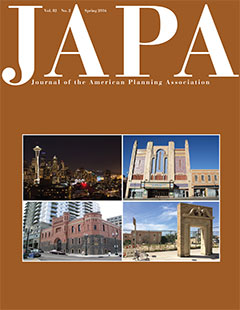
Authors
Publication Date
May 1, 2013
Tags
Resource Type
Does TOD need the ‘T’?
Problem, research strategy, and findings: Transit-oriented developments (TODs) often consist of new housing near rail stations. Channeling urban growth into such developments is intended in part to reduce the climate change, pollution, and congestion caused by driving. But new housing might be expected to attract more affluent households that drive more, and rail access might have smaller effects on auto ownership and use than housing tenure and size, parking availability, and the neighborhood and subregional built environments. I surveyed households in northern New Jersey living within two miles of 10 rail stations about their housing age and type, access to off-street parking, work and non-work travel patterns, demographics, and reasons for choosing their neighborhoods. The survey data were geocoded and joined to on-street parking data from a field survey, along with neighborhood and subregional built environment measures. I analyzed how these factors were correlated with automobile ownership and use as reported in the survey. Auto ownership, commuting, and grocery trip frequency were substantially lower among households living in new housing near rail stations compared to those in new households farther away. But rail access does little to explain this fact. Housing type and tenure, local and subregional density, bus service, and particularly off- and on-street parking availability, play a much more important role.Takeaway for practice: Transportation and land use planners should broaden their efforts to develop dense, mixed-use, low-parking housing beyond rail station areas. This could be both more influential and less expensive than a development policy oriented around rail.